- News
- Reviews
- Bikes
- Accessories
- Accessories - misc
- Computer mounts
- Bags
- Bar ends
- Bike bags & cases
- Bottle cages
- Bottles
- Cameras
- Car racks
- Child seats
- Computers
- Glasses
- GPS units
- Helmets
- Lights - front
- Lights - rear
- Lights - sets
- Locks
- Mirrors
- Mudguards
- Racks
- Pumps & CO2 inflators
- Puncture kits
- Reflectives
- Smart watches
- Stands and racks
- Trailers
- Clothing
- Components
- Bar tape & grips
- Bottom brackets
- Brake & gear cables
- Brake & STI levers
- Brake pads & spares
- Brakes
- Cassettes & freewheels
- Chains
- Chainsets & chainrings
- Derailleurs - front
- Derailleurs - rear
- Forks
- Gear levers & shifters
- Groupsets
- Handlebars & extensions
- Headsets
- Hubs
- Inner tubes
- Pedals
- Quick releases & skewers
- Saddles
- Seatposts
- Stems
- Wheels
- Tyres
- Health, fitness and nutrition
- Tools and workshop
- Miscellaneous
- Tubeless valves
- Buyers Guides
- Features
- Forum
- Recommends
- Podcast
review
£10,000.00
VERDICT:
Seriously fast aero race bike with great handling, but not the smoothest and not the ultimate spec it should be
Weight:
7,730g
Contact:
At road.cc every product is thoroughly tested for as long as it takes to get a proper insight into how well it works. Our reviewers are experienced cyclists that we trust to be objective. While we strive to ensure that opinions expressed are backed up by facts, reviews are by their nature an informed opinion, not a definitive verdict. We don't intentionally try to break anything (except locks) but we do try to look for weak points in any design. The overall score is not just an average of the other scores: it reflects both a product's function and value – with value determined by how a product compares with items of similar spec, quality, and price.
What the road.cc scores meanGood scores are more common than bad, because fortunately good products are more common than bad.
- Exceptional
- Excellent
- Very Good
- Good
- Quite good
- Average
- Not so good
- Poor
- Bad
- Appalling
The Trek Madone SLR 9 Disc delivers the speed that its impressive looks suggest, backed up by good handling and, thanks to the new adjustable IsoSpeed decoupler, reasonable smoothness. Make no mistake, though, it's still very much a firm ride. The £10k price doesn't look out of place these days, but the specification is lacking a few things to make it the ultimate bike it so nearly is.
- Pros: Seriously fast, good handling, geometry, fit, looks, spec
- Cons: Not the smoothest, no power meter, compact chainset, heavy
> Find your nearest dealer here
All about the speed
If you want to go fast, get yourself an aero bike. Yes, at the end of the day it's about the rider and the legs, but swapping from a regular road bike with round tubes to the Trek Madone SLR reveals an immediately noticeable increase in speed, with higher speeds more easily reached for less effort.
Speeding on the Madone SLR really is very addictive. It's impossible to go out for a gentle jaunt. It wants hammer-time all the time. How it stacks up against other aero bikes needs some proper independent wind tunnel testing, but my seat-of-the-chamois impression, along with speed and power data from regular testing loops, confirms that it's easily comparable to the key rival aero bikes in this sector.
Some bikes just look fast, the Madone actually is fast. A regular proving ground for testing bikes is my local chain gang. Where better than a power hour to put a race bike through its paces, with rolling terrain, some punchy climbs and some fast drags, and people a lot fitter and faster than I am to keep up with? The Madone has given me the best advantage yet, not only allowing me to keep up but also slice a massive two minutes off my PB for the 40km route.
It's clearly insanely fast at high speeds. Get it up to 30kph and the speed really ramps up as you pile on the watts. But it doesn't feel quite as snappy at lower speeds, out of tight corners, and the weight holds it back on steeper gradients.
Handling and geometry
The Madone's handling is race-focused, as you'd expect. The new H1.5 geometry, which replaces the previous choices of slammed H1 and relaxed H2, is well judged. It provided a comfortable fit with a bit of stretch to the handlebar.
I shuffled a few spacers about – an easy task as the aero spacers are split – to get my desired position, a bit lower than standard. In the drops, it's an aggressive position but it's comfortable on longer rides too, but then I am used to race bike geometry which certainly helps.
The new two-piece bar and stem allow more fit adjustment than before, with the angle of the handlebar adjustable to suit your preference. The bar is a comfortable shape with the swept back design providing manageable reach to the hoods and drops.
It's a handlebar intended to be ridden in the drops or hoods the majority of the time – there's no tape on the tops. You can still cruise along gripping this section if you really want. The narrow 38cm width is good for reducing drag and keeping your arms tucked in, but might not be everyone's cup of tea. On a bike of this price, you can easily spec the bar width to suit your requirements.
Better brakes
The biggest improvement over the previous generation Madone, in my opinion, is the change from the custom designed integrated brakes with the head tube flaps (Vector Wings, in Trek speak) to disc brakes.
You'll have your own preference of braking system, and Trek is still offering the Madone SLR with rim brakes. In fact, it's one of the few brands still to offer rim brakes – many rival brands have fully embraced disc brakes with their latest aero bikes.
Compared to the slightly finicky integrated brakes of the previous Madone, the hydraulic disc brakes are easy to live with and required no maintenance during my time with the bike. Power is plentiful and lever feel is perfect for meting out the power smoothly in every situation. I experienced some occasional noise in damp weather but never for long.
Another benefit of disc brakes is increased tyre clearance, with 28mm tyres supported. That's a good option if you want to increase comfort. By contrast, the rim brake Madone only takes up to a 25mm tyre.
Fast and comfortable? Fast or comfortable?
I remember riding some of the first generation aero bikes and coming away impressed with the speed compared with regular road bikes, but less taken with the reduced ride comfort. Big aero tubes aren't good for building compliance and comfort into a bike.
Trek's solution, rolled out with the last Madone and upgraded with adjustability on this second generation bike, is the same IsoSpeed decoupler first developed for the Domane, an endurance bike designed to tame the cobbles of Paris-Roubaix.
Trek has now integrated the IsoSpeed decoupler into the top tube, from its previous location in the seat tube, and made it adjustable, allowing you to choose how soft or firm it is.
The IsoSpeed decoupler basically allows the seat tube and seatpost to move independently of the frame in a controlled manner, with a new elastomer bumper to control the rebound. Undo a couple of bolts and you can move a small slider to choose the firm, soft or somewhere-in-between setting.
If you're going from smooth crit circuits to bumpy normal roads you might adjust it frequently. Or, as in my case, you might play around with it for a few rides then just leave it in the softest setting.
Does it work? Yes, it does. How much compliance does it actually provide? Trek says: 'Compliance at the saddle of a 56cm frame ranges from approximately 119N/mm to 175N/mm depending on the slider's position. According to these figures, the new Madone is capable of both more compliance (+17%) and less compliance (-22%) than its predecessor.'
What does that mean on the road? In my experience the IsoSpeed softens bigger impacts, say if you clip the edge of a sunken drain or pothole when you're in a peloton and can't read the road ahead of you.
But make no mistake, the Madone still provides a very firm and hard ride. It just doesn't seem to be sensitive enough to smooth out poorly surfaced roads, the type where the top layer of tarmac has eroded away, or worse still, surface dressed roads. It's easy to overlook when you're galloping along, but on casual rides I found it a bit tiring.
Frame design
If there's an award for the biggest aero down tube, the Madone wins hands down. No other aero bike goes to such extremes to reduce drag as the Madone with massive profiles at the fork, down tube, seat tube and stays, all intended to reduce drag as much as possible.
The two-tone paint job gives an air of quality, a sparkly gloss paint over matt black. It's one of a handful of stock colour options too, and there's also Trek's Project One where a world of custom paint schemes awaits.
Integration is a key buzzword in bike design these days, and with the Trek Madone it's the IsoSpeed decoupler hidden away underneath the top tube, and a new aero handlebar and stem with greater fit adjustment than the old one-piece aero handlebar.
All cables and hoses are routed inside the Madone, right from the front where they are hidden inside the handlebar and stem and into the frame. The only exposed cabling is just where they exit ahead of the derailleurs and callipers.
The Di2 junction box is hidden inside the handlebar for easy charging and gear tweaking.
Aero handlebars are a prime method for reducing frontal surface area, which is why nearly all aero bikes now feature them. The downside is the limited fit adjustment. Trek's new handlebar uses a design that splits the stem, allowing the angle of the handlebar to be adjusted with a range of +/-5 degrees. Under the stem are four bolts you can loosen to adjust the tilt of the handlebar. Computers and other accessories can be bolted to the front of the handlebar using a GoPro-style mount.
As I said earlier, the Madone uses Trek's new H1.5 geometry. This replaces the previous low and stretched H1 and slightly more upright H2 options. The 56cm model, for example, has an effective top tube length of 559.9mm – we might as well call that 560mm – a head tube of 151mm, a stack of 563mm and a reach of 391mm. Trek says it hits the sweet spot, and I would tend to agree.
The seatpost is an integrated design and is easy to adjust with bolts at the back, but you do want to pay close attention to the manual and the recommended torque settings. The saddle clamp is nice and easy to set up, with individual bolts for adjusting the fore-aft and tilt, and there's a choice of setback to tune your position.
Build
For £10,000, this Trek Madone needs to be the ultimate bike, and it nearly is but for a couple of issues. It's specced with the sort of kit you'd expect on this level of bike, including the Shimano Dura-Ace Di2 groupset, which is flawless.
However, I can't help but question the 50/34-tooth compact chainset on a race bike – surely a 52/36 would have been better, Trek?
The 11-28 cassette is largely standard even on race bikes these days, and I appreciated it on some hillier rides.
Bontrager's Aeolus XXX 6 wheels enhance the aerodynamic performance greatly. They look fantastic and they sound great when you sprint the Madone up to speed. The wide profile provides a good base for the 25mm Bontrager R4 320tpi tyres too, and the wheels are tubeless-ready should you want to ditch the inner tubes. I found the wheels a bit of a handful in strong crosswinds but they were never erratic, you just have to be prepared.
I had zero issues with the Bontrager Montrose saddle nor the two-bolt seat clamp, which as I said above provides easy angle and fore-aft adjustment.
All the parts build up to a 7.7kg weight for the size 56cm bike tested. For comparison, the Specialized S-Works Venge in the same size and with similar parts tickled the scales to 7.15kg, so the Madone is carrying a bit of timber.
Rivals
The Venge is the main rival that springs to mind because it's the aero bike I tested most recently. The Venge is lighter, cheaper (not by much), includes a dual-sided power meter, has more easily adjustable handlebar and stem, and the ride quality is a notch above the Madone. If it was my money, that's where it would be heading.
Other aero bikes we could throw into the ring include the Cervelo S5 Disc and Cannondale SystemSix (we haven't reviewed these bikes yet), Giant Propel Advanced SL Disc (we tested the £3,000 Propel Advanced Disc last year) and Bianchi Oltre XR2.
> Buyer's Guide: 18 of the best and fastest 2019 aero road bikes
The XR2 is a good comparison because it also attempts to provide extra compliance by infusing the carbon layup with a special vibration-damping material, and it does provide a pretty smooth ride. It's not in the same ballpark when it comes to aerodynamics and integration, though.
Another rival comes from Trek itself: the recently introduced Madone SL, which brings the price down by virtue of using cheaper carbon fibre, though it still comes out of the same mould so you're getting the same aero performance and IsoSpeed decoupler. That range starts off at £3,600 which, if you love the look of this Madone but want to save a bit of cash, could be the bike for you.
Conclusion
The Madone SLR 9 Disc is ferociously fast and will enable you to smash PRs and dominate road races, with striking looks, some clever integration and a faultless build, but the firm ride makes it a chore to ride on regular roads at less than race pace, and it's a bit portly too. Those gripes aside, it's a very impressive bike, but I'm left just wanting a bit more refinement and finesse.
Verdict
Seriously fast aero race bike with great handling, but not the smoothest and not the ultimate spec it should be
road.cc test report
Make and model: Trek Madone SLR 9 Disc
Size tested: 56cm
About the bike
List the components used to build up the bike.
From Trek:
Frame
700 Series OCLV Carbon, KVF (Kammtail Virtual Foil) tube shape, Adjustable Top Tube IsoSpeed, Micro-adjust seatmast, tapered head tube, BB90, flat mount disc brakes, 12 mm thru-axle, invisible cable routing, control centre, precision water bottle placement, Aero 3S chain keeper, DuoTrap S-compatible
Fork
Madone KVF full carbon disc, carbon tapered steerer, carbon dropouts, hidden cable routing, flat-mount disc brake, 12 mm thru-axle
Wheels
Wheels
Bontrager Aeolus XXX 6 Tubeless Ready Disc, 12 mm thru-Axle
Tyres
Bontrager R4 320, 320 tpi, 700x25 c
Max tyre size
28 c Bontrager tyres (with at least 4 mm of clearance to frame)
Drivetrain
Shifters
Shimano Dura-Ace Di2, 11-speed
Front derailleur
Shimano Dura-Ace Di2, braze-on
Rear derailleur
Shimano Dura-Ace Di2
Crank
Shimano Dura-Ace, 50/34 (compact)
Bottom bracket
BB90
Cassette
Shimano Dura-Ace, 11-28, 11-speed
Chain
Shimano Dura-Ace
Pedals
Not included
Components
Saddle
Bontrager Montrose Pro, carbon rails
Seatpost
Madone carbon seatpost, 25 mm offset w/integrated light mount
Handlebar
Madone-specific adjustable aero VR-CF, internal cable routing
Grips
Bontrager tape
Stem
Madone-specific internal cable routing
Head set
Madone integrated, stainless cartridge bearings, sealed, 1-3/8in top, 1.5in bottom
Brake set
Shimano Dura-Ace flat-mount hydraulic disc
Tell us what the bike is for and who it's aimed at. What do the manufacturers say about it? How does that compare to your own feelings about the bike?
Trek says, "Madone SLR 9 Disc is the hero of the road disc revolution. Advanced road bike aerodynamics, our lightest OCLV Carbon layup, adjustable compliance and a Shimano Dura-Ace Di2 electronic drivetrain make it the final stop in your search for a top-of-the-line aero road bike.
"A lightweight 700 Series OCLV Carbon frame with Kammtail Virtual Foil aerodynamic tube shaping and road-smoothing Adjustable Top Tube IsoSpeed, KVF full carbon disc fork, 12 mm thru axles, an adjustable aero bar and stem, a 2x11 Shimano Dura-Ace Di2 electronic drivetrain, Tubeless Ready Bontrager Aeolus XXX 6 wheels, a micro-adjust Madone seatmast and Dura-Ace flat-mount disc brakes."
Where does this model sit in the range? Tell us briefly about the cheaper options and the more expensive options
Sits right at the top of Trek's aero bike category, it doesn't get better than this.
Frame and fork
Overall rating for frame and fork
9/10
Tell us about the build quality and finish of the frame and fork?
Exceptional quality, as you'd expect and hope at this price.
Tell us about the materials used in the frame and fork?
Highest grade 700 OCLV is used to make the frame and fork.
Tell us about the geometry of the frame and fork?
Uses Trek's new H1.5 geometry which splits the difference between the slammed H1 and laid back H2.
How was the bike in terms of height and reach? How did it compare to other bikes of the same stated size?
The stack and reach are predictably aggressive given it's a race bike, with a long reach and low stack. The new H1.5 cuts a nice compromise between the previous very slammed H1 and upright H2 geometry. I found the fit very good, only moved some spacers to lower the handlebar.
Riding the bike
Was the bike comfortable to ride? Tell us how you felt about the ride quality.
Yes and no. It's not the smoothest ride on rough road surfaces, but the position makes it comfortable on longer rides.
Did the bike feel stiff in the right places? Did any part of the bike feel too stiff or too flexible?
It sure doesn't lack the stiffness you want in a race bike.
How did the bike transfer power? Did it feel efficient?
Extremely well for sprinting out of corners and attacking mates.
Was there any toe-clip overlap with the front wheel? If so was it a problem?
None.
How would you describe the steering? Was it lively neutral or unresponsive? Quite laid back.
Tell us some more about the handling. How did the bike feel overall? Did it do particular things well or badly?
Handling is a highlight, with good stability at high speeds, and it's pretty docile at lower speeds.
Which components had the most effect (good or bad) on the bike's comfort? would you recommend any changes?
You could go up to 28mm tyres, which might certainly impart a bit more comfort for dealing with crappy road surfaces.
Which components had the most effect (good or bad) on the bike's stiffness? would you recommend any changes?
I'd like to see a 52/36t chainset and a power meter included at this price.
Which components had the most effect (good or bad) on the bike's efficiency? would you recommend any changes?
No changes.
Rate the bike for efficiency of power transfer:
9/10
Rate the bike for acceleration:
7/10
Rate the bike for sprinting:
8/10
Rate the bike for high speed stability:
9/10
Rate the bike for cruising speed stability:
9/10
Rate the bike for low speed stability:
8/10
Rate the bike for flat cornering:
8/10
Rate the bike for cornering on descents:
8/10
Rate the bike for climbing:
6/10
The drivetrain
Rate the drivetrain for performance:
9/10
Rate the drivetrain for durability:
9/10
Rate the drivetrain for weight:
9/10
Rate the drivetrain for value:
8/10
Wheels and tyres
Rate the wheels for performance:
8/10
Rate the wheels for durability:
8/10
Rate the wheels for weight:
6/10
Rate the wheels for comfort:
6/10
Rate the wheels for value:
8/10
Rate the tyres for performance:
9/10
Rate the tyres for durability:
8/10
Rate the tyres for weight:
8/10
Rate the tyres for comfort:
8/10
Rate the tyres for value:
8/10
Controls
Rate the controls for performance:
8/10
Rate the controls for durability:
8/10
Rate the controls for weight:
8/10
Rate the controls for comfort:
8/10
Rate the controls for value:
8/10
Your summary
Did you enjoy riding the bike? Yes
Would you consider buying the bike? No
Would you recommend the bike to a friend? Probably
How does the price compare to that of similar bikes in the market, including ones recently tested on road.cc?
There are quite a few impressive rivals at this price and it compares well against those, but the lack of a power meter is a glaring omission.
Rate the bike overall for performance:
8/10
Rate the bike overall for value:
5/10
Use this box to explain your overall score
I love the speed and handling and looks, but it's not the smoothest ride and the spec doesn't make it the ultimate bike it needs to be at this price.
About the tester
Age: 31
I usually ride: My best bike is:
I've been riding for: 10-20 years I ride: Every day I would class myself as: Expert
I regularly do the following types of riding: road racing, time trialling, cyclo-cross, commuting, touring, mountain biking
David worked on the road.cc tech team from 2012-2020. Previously he was editor of Bikemagic.com and before that staff writer at RCUK. He's a seasoned cyclist of all disciplines, from road to mountain biking, touring to cyclo-cross, he only wishes he had time to ride them all. He's mildly competitive, though he'll never admit it, and is a frequent road racer but is too lazy to do really well. He currently resides in the Cotswolds, and you can now find him over on his own YouTube channel David Arthur - Just Ride Bikes.
Latest Comments
- TempleOrion 2 hours 28 min ago
Also you can get a decent Chinese copy of Rock Bros for about a tenner less than that 👌🏾
- wtjs 4 hours 1 min ago
The excellent Garmin software and firmware is what you're paying for when you buy expensive Garmin gadgets. I'm a great fan and they're not going...
- David9694 5 hours 13 min ago
We constantly hear how cyclists film women and children in cars, whereas cars get used to to attempt to abduct women children off the street ...
- David9694 5 hours 23 min ago
Three taken to hospital after car overturns in Tivoli Road, Margate https://www.kentonline.co.uk/thanet/news/three-in-hospital-after-car-sma...
- David9694 5 hours 32 min ago
Emergency services called to incident in Verwood...
- chrisonabike 5 hours 55 min ago
Was in need of exercise so popped over for a look this evening. Short: it's a bodge - bollards would fix that *. Or rather (safer for all) a...
- chrisonabike 6 hours 14 min ago
... and of course "what does good look like" is not hard to experience - just over 100 miles away......
- Rendel Harris 6 hours 51 min ago
Actually any person, victim or even just a member of the public with no connection to the offence, can ask the Attorney Genertal to review a case...
- Steve K 7 hours 28 min ago
When I was cycling to every Crystal Palace match for a season back in 2016/17, my LBS gave my bike Palace coloured outers.



















































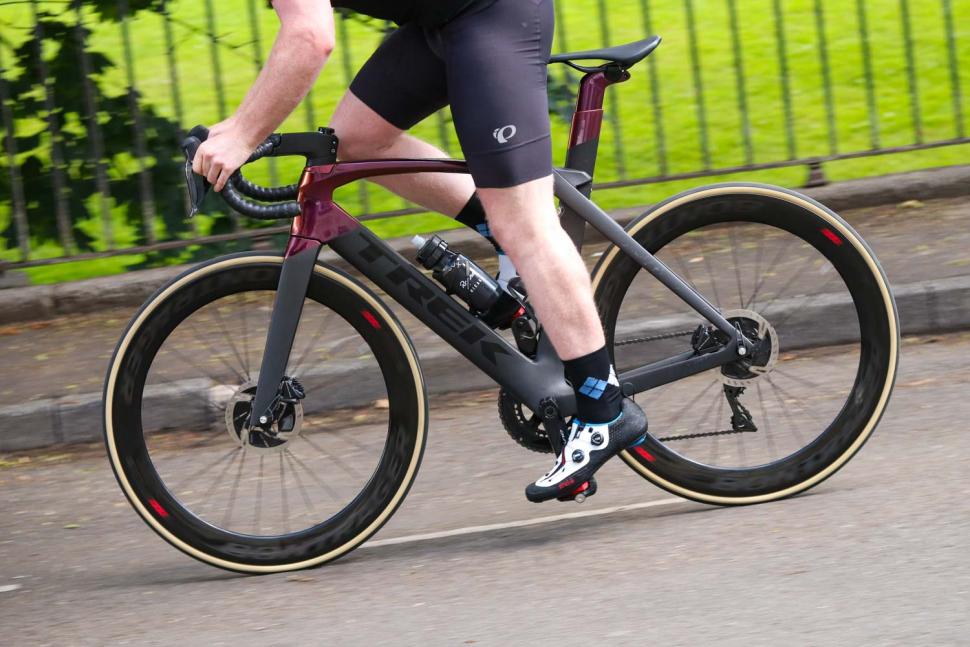
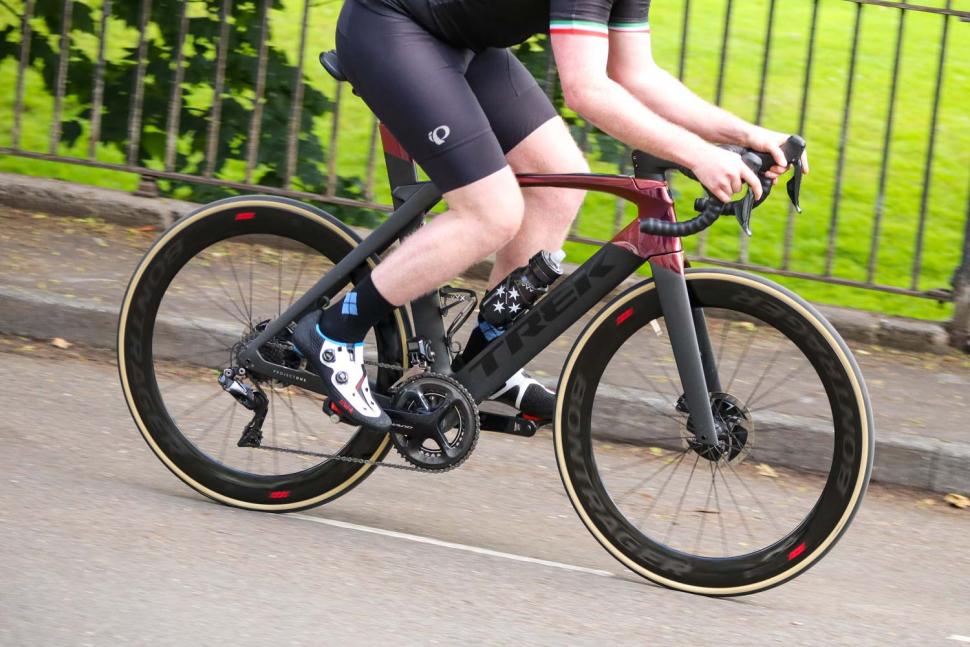

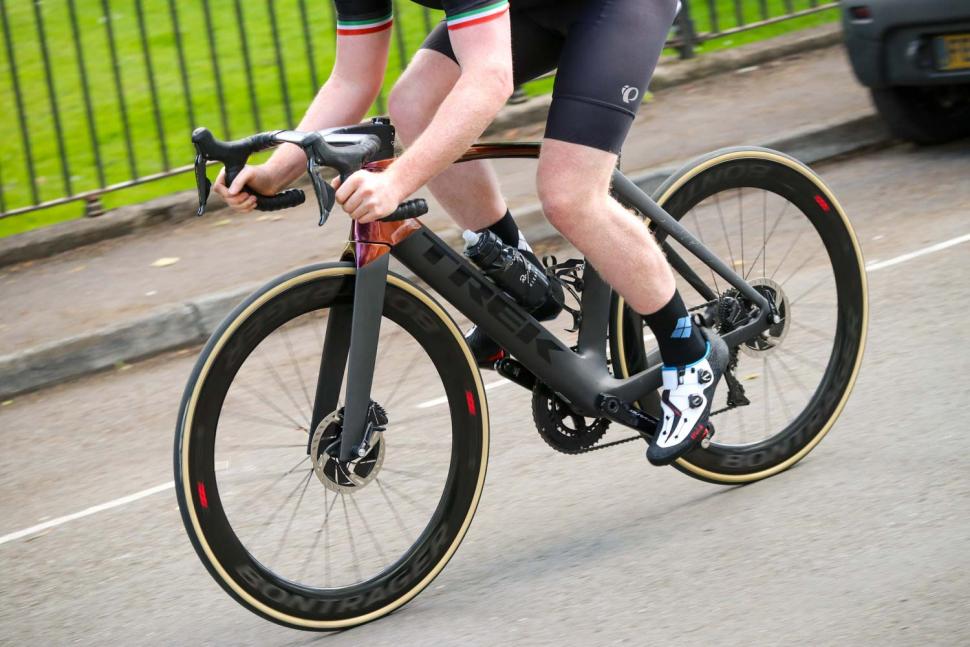

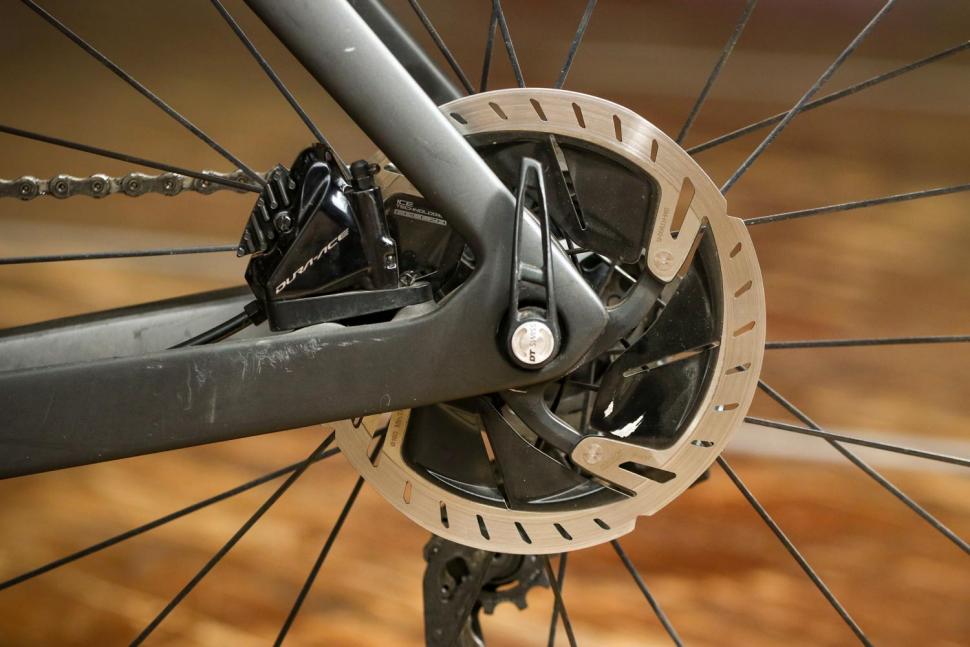




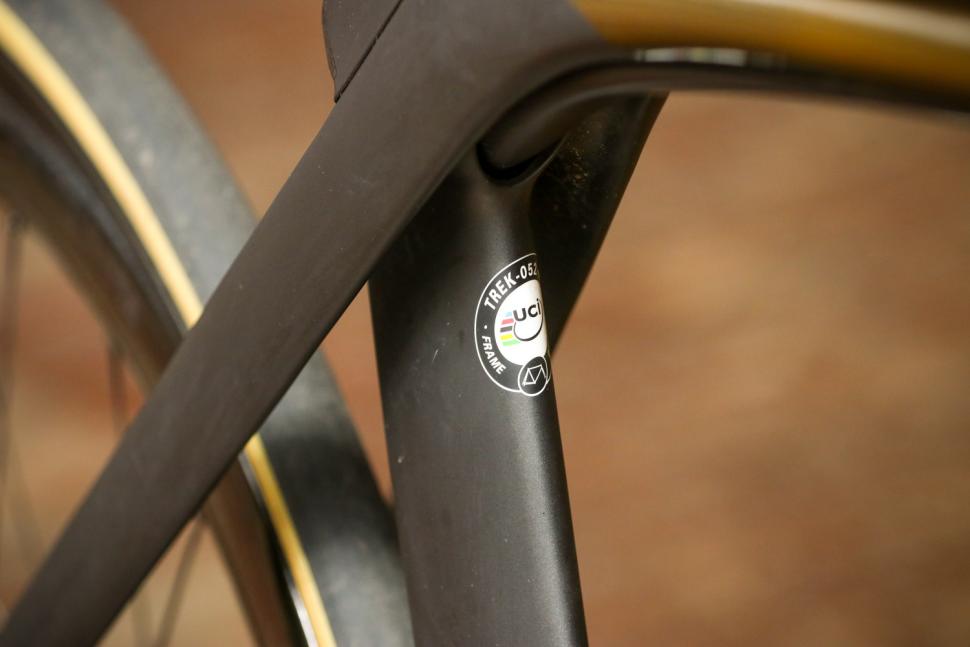
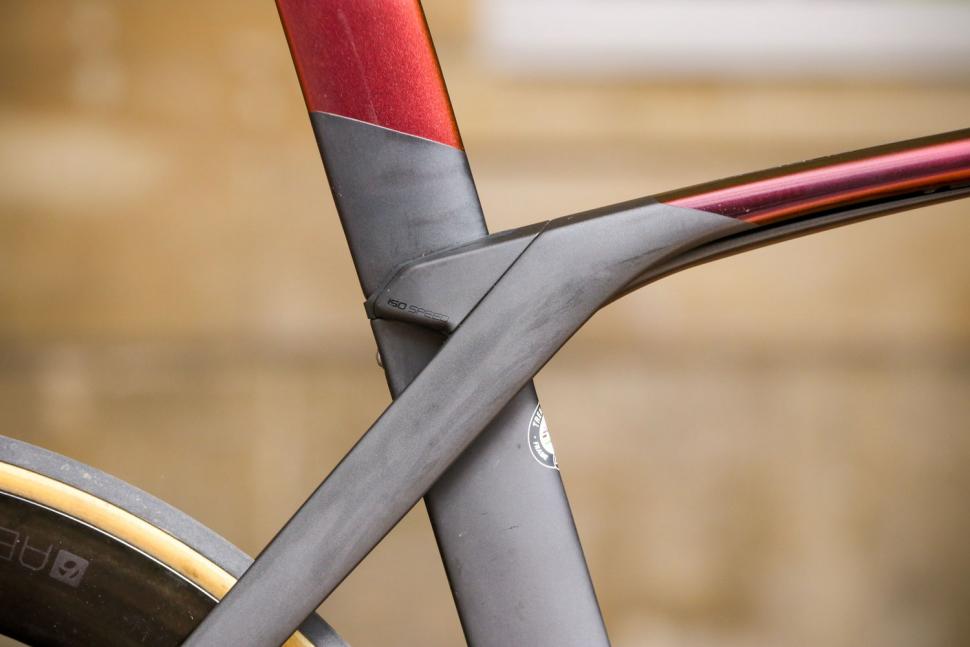
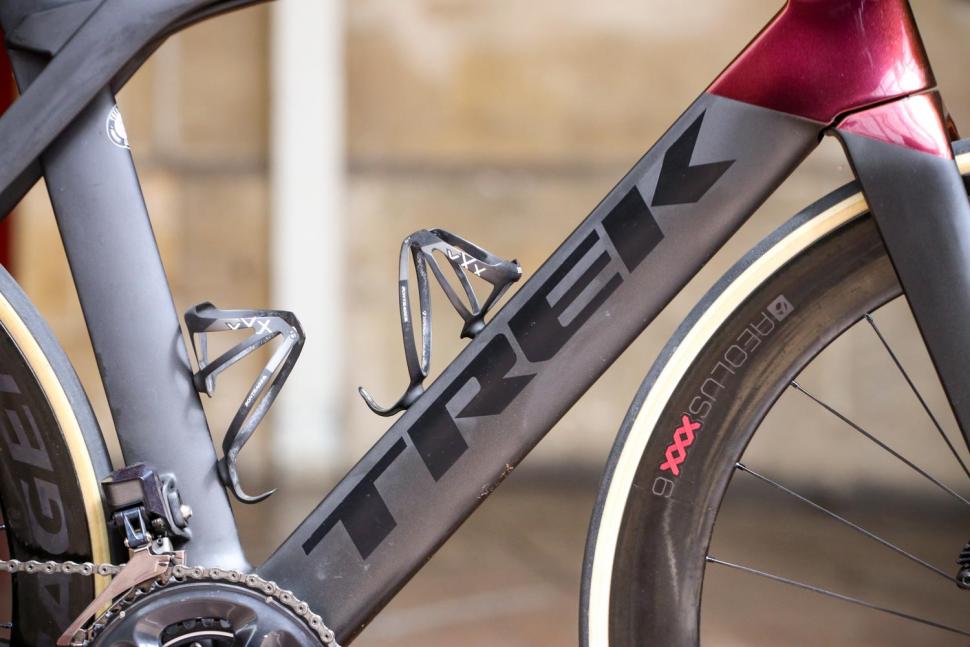
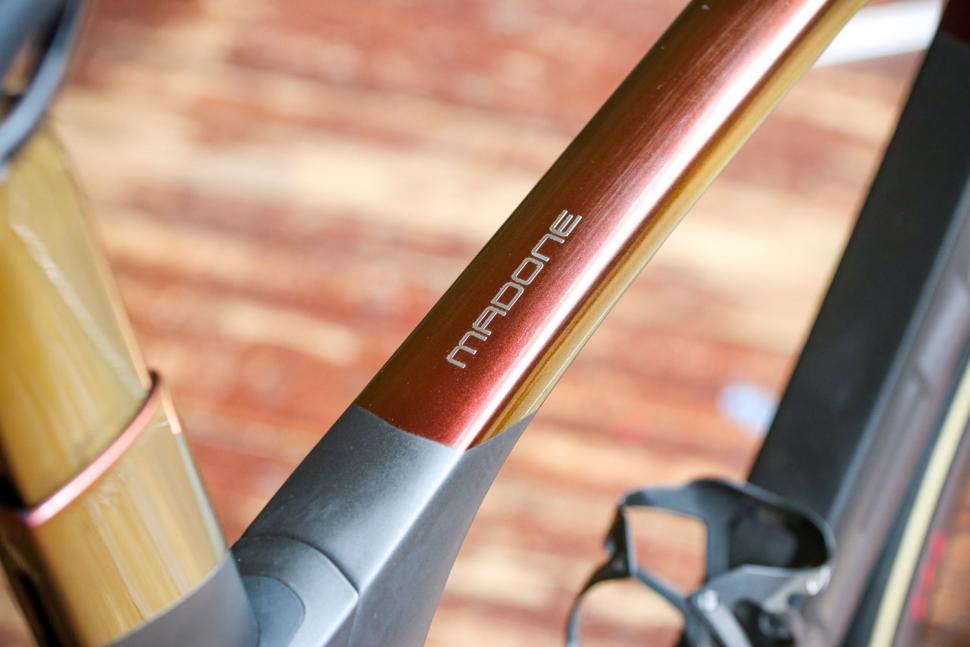
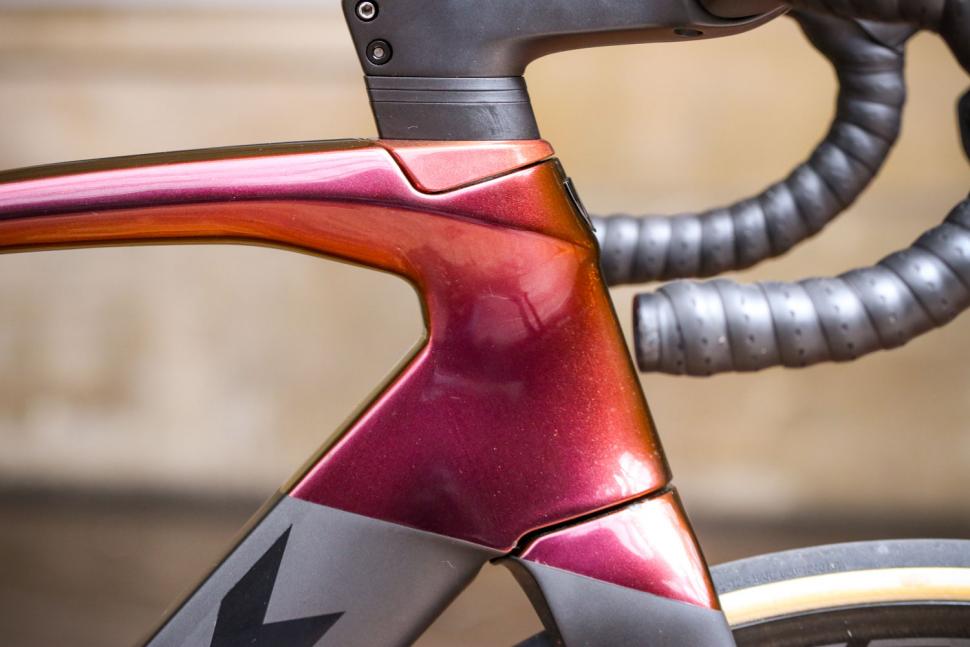
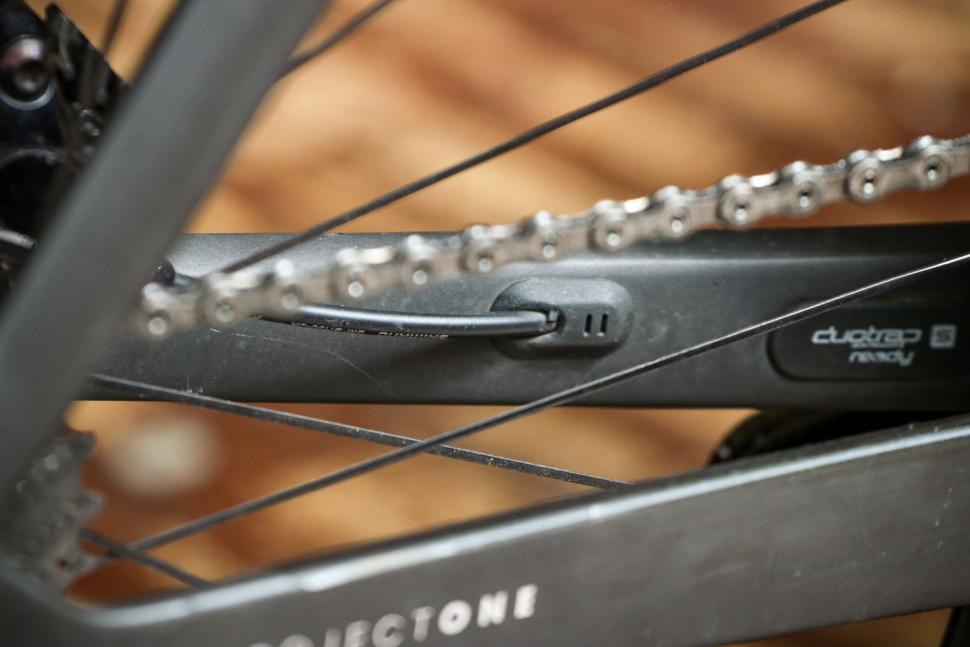
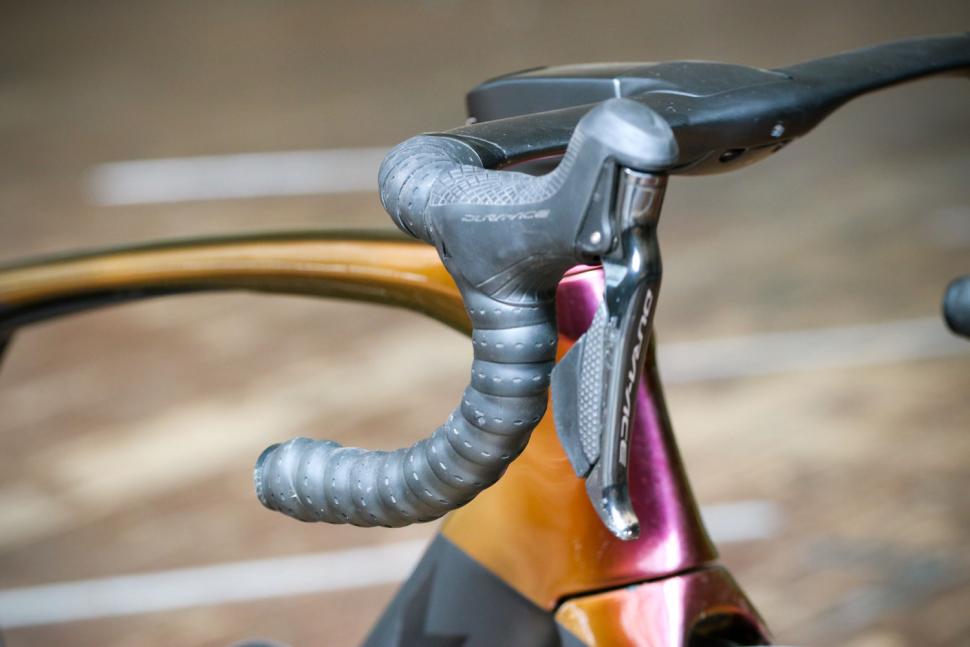
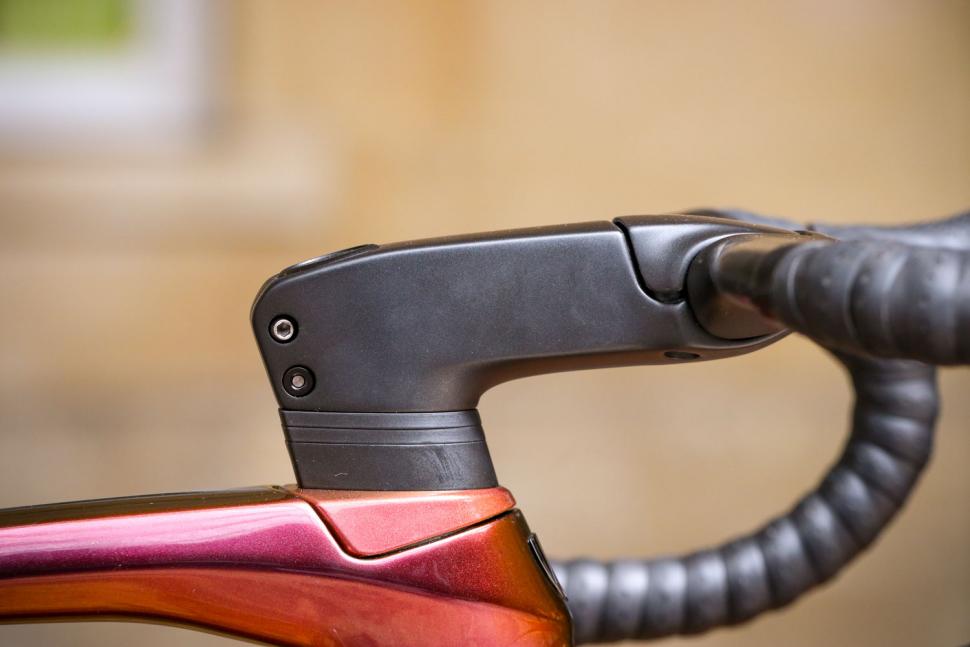

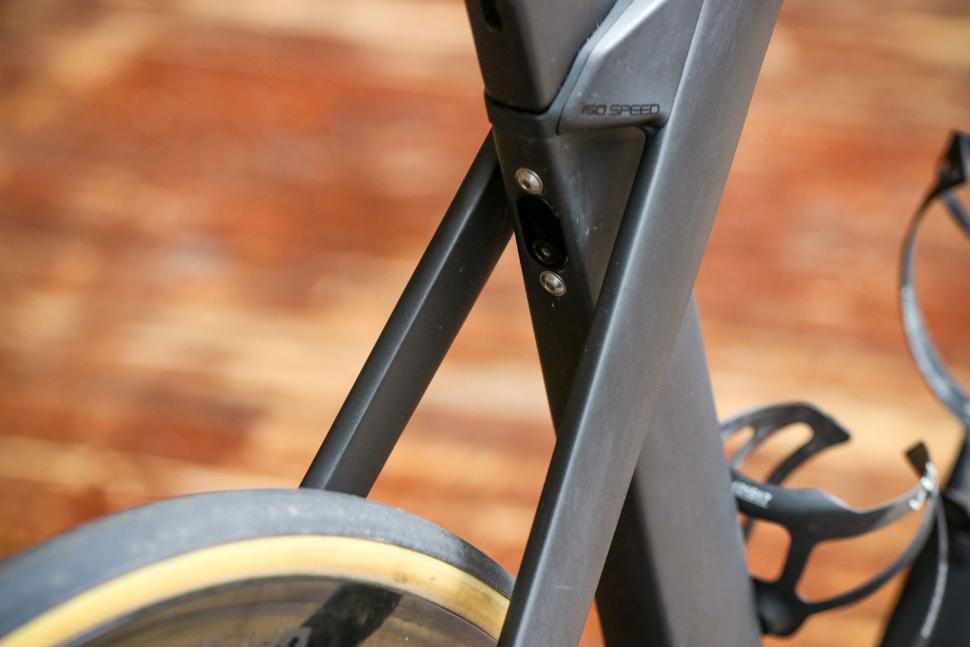
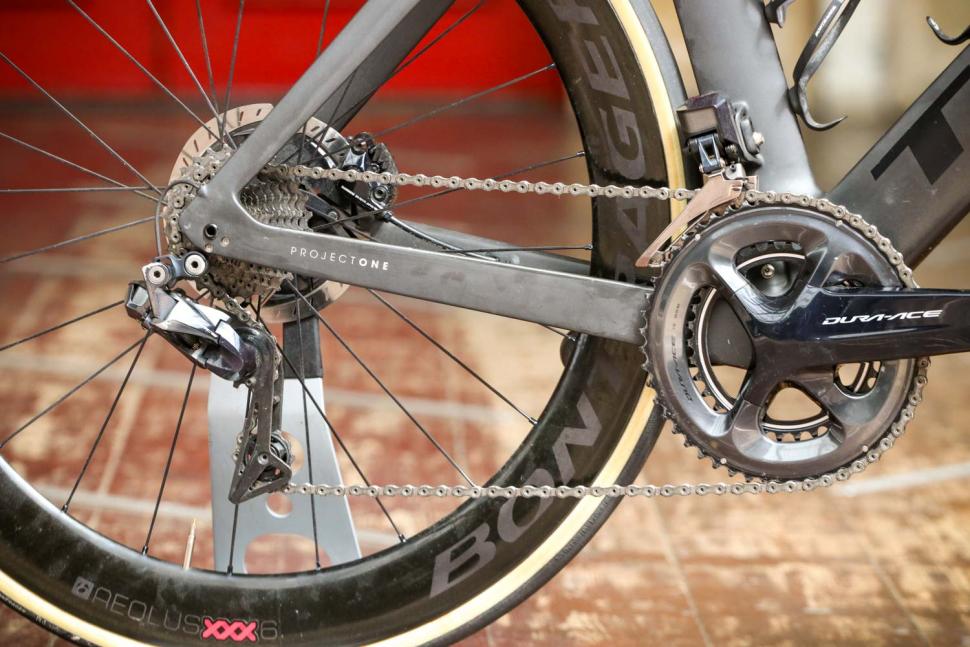
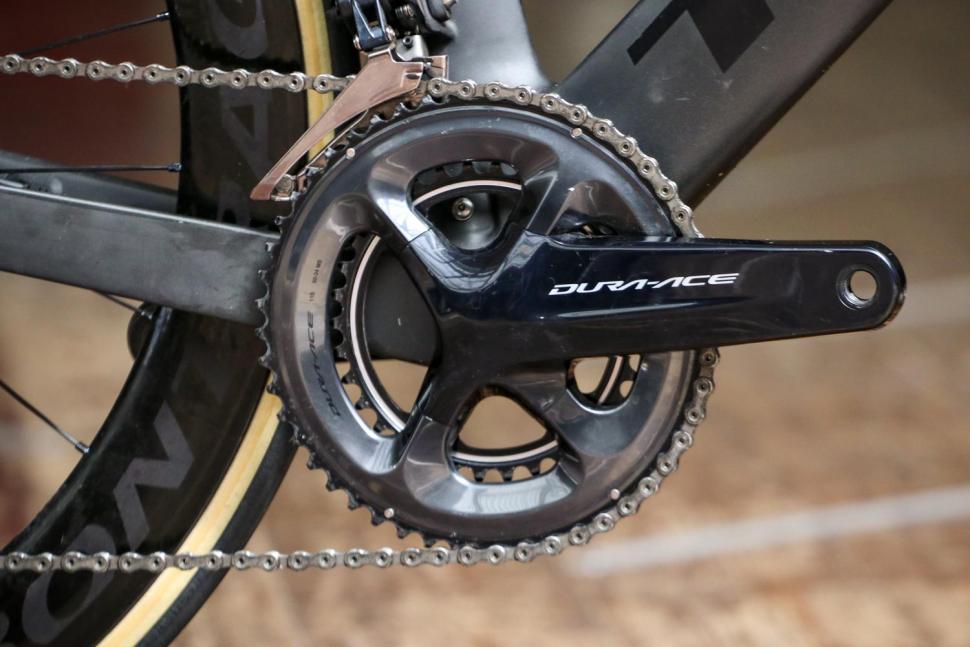
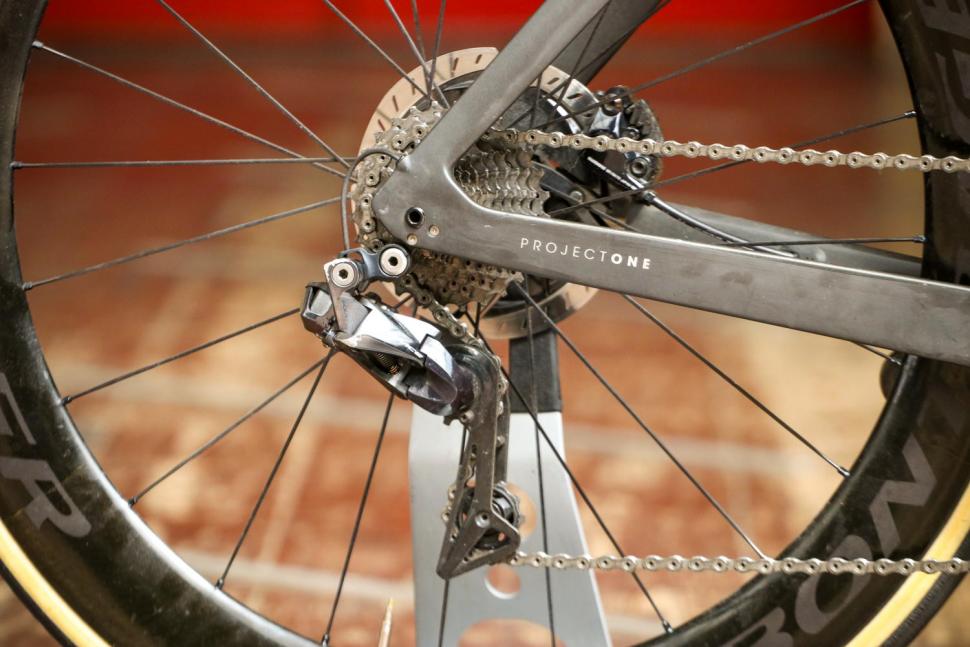
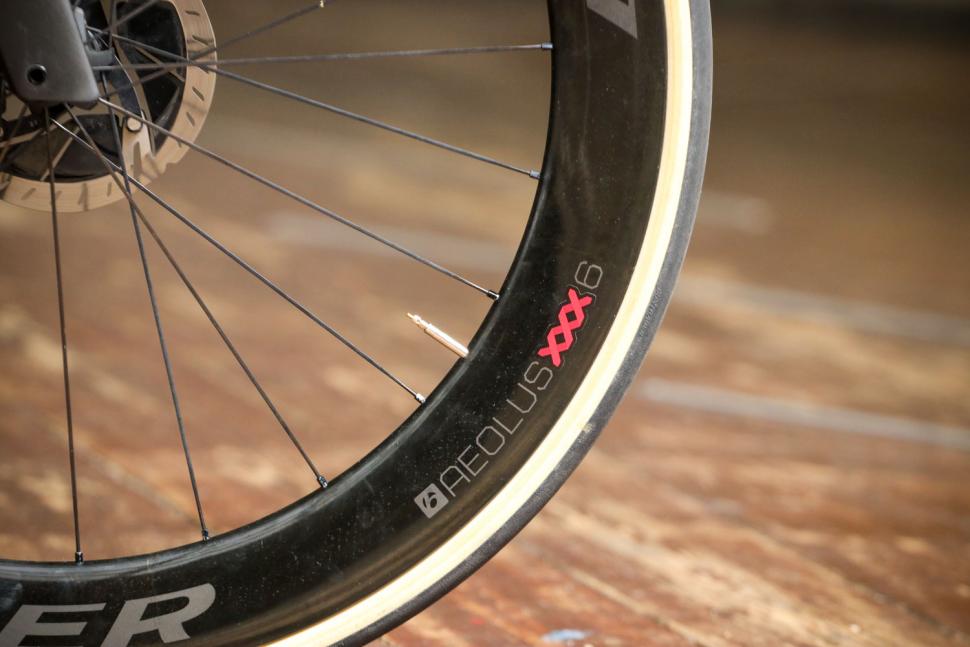
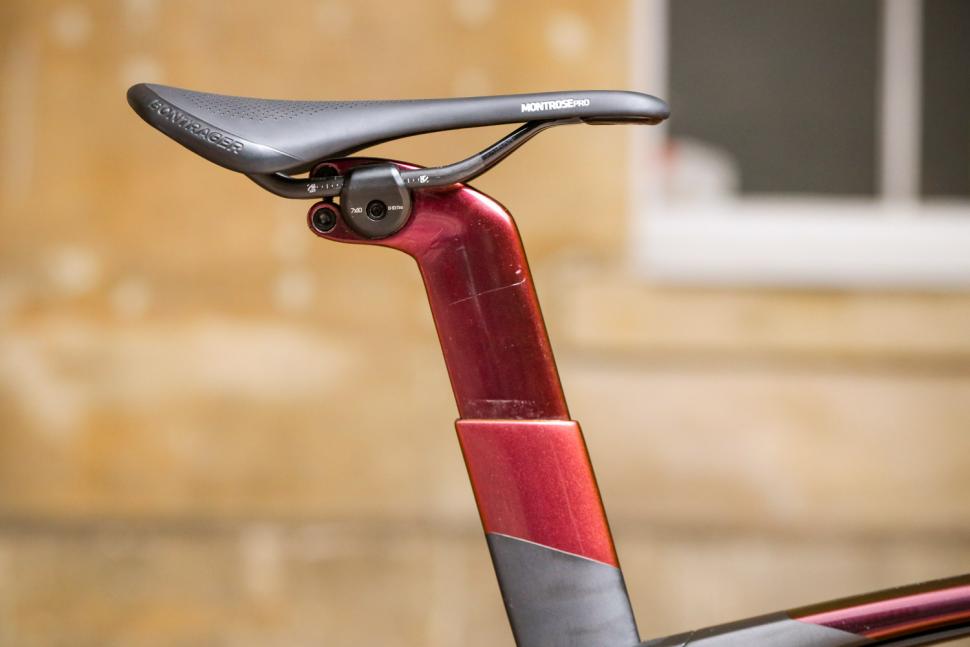


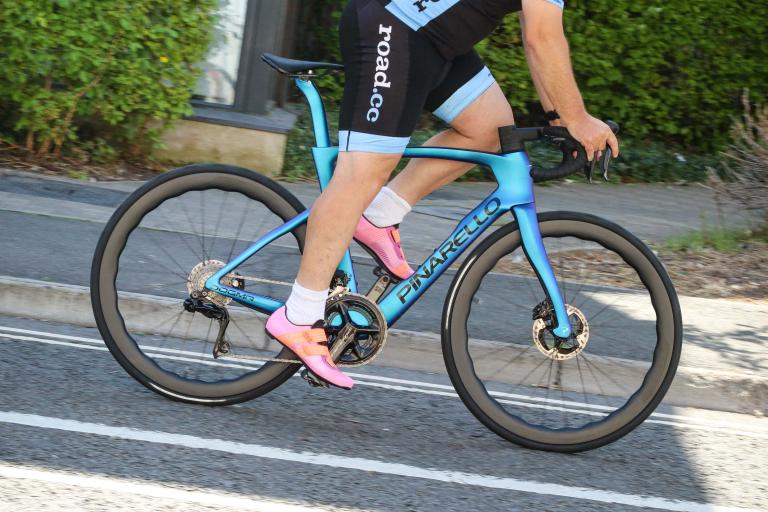

Add new comment
12 comments
Steve I really feel for you mate. You'd hope for a few months of silence for that sort of cash and for Trek to maybe support you a little more.
[quote=ktache]<p>Steve I really feel for you mate. You'd hope for a few months of silence for that sort of cash and for Trek to maybe support you a little more.</p>[/quote]
Thanks ktache
It's a shame because it is a really nice bike otherwise. But, all for naught with poorly
made press fit BB.
Steve
I have a 2019 Madone SLR 9 eTap. From the first day, bottom bracket creak.
Movement of the bearing on the non drive side
has destroyed the frame.
Trek has been quite reticent about taking care
of this problem.
Utterly disappointing.
Why is the reviewer comparing it to the 2013 Oltre XR2? The Oltre XR4 is the current model and has been since 2016.
Is this another of these Road.cc recycled articles?
10,000 pound for a reinforced plastic bike! I bet any money the people at Trek are laughing so much that there must be concerns for health and sanity within the company, not as concerning of course for the loonies that would actually buy something like this at this price. This bike probably costs pennies to make and the profit margin must be astronomical, nice one Trek.
Trek are not alone of course while people are willing to purchase this 5 minute wonder craze madness at prices that are totally immoral.
The world has gone totally mad, I tell you, you will be telling me next that Boris Johnston will be the next leader of the country, Ha, Ha, Ha, it's so crazy it's not even funny.
Please will somebody wake me up as this dream has become seriously bad and not funny.
It isn't £10,000 for reinforced plastic. The Trek frame probably costs less than half the total.
I've read that a lot of people spend £15,000+ on a wedding. Now that is barmy.
Q: Which component would you recommend changing to improve the product? A: None. Wheels - 6/10....but then again better wheels would no doubt increase the price and lower the already paltry 5/10 value for money score.
I don't drive.
I have never learned to drive.
I hate cars.
I think they're not only poluting the planet, but also making people selfish and entitled.
But if I were given ten grand to spend, Brewster's Millions style, on a one-off purchase of a form of private transportation, I'd buy something like a Volkswagen Up over this. Even just to park on my drive as an ornamental feature. Or to take apart and admire the engineering of thousands of parts.
£10,000 is simply a ludicrous amount of money for a bicycle. And this one is not even nice to look at.
Plus Trek screwed over Greg Lemond.
It’s only ludicrous if you can’t afford it.
True. Once you get above a subsistence level of income and start to be able to afford non-essential "luxuries", there are those who will question how you spend your money. I for example think it is ludicrous to spend £1,000 on a mobile phone, with a useful life of 2 years, after which it is extremely difficult to recycle, but plenty of i-phone users would disagree. There are those who who spend £10,000 on a cruise after which they have nothing to show but a few selfies, or spend £10,000 on a hifi component or camera, or £2k per year on golf club membership, and why not if they have the cash and that's their interest? But in the context of any of these, a bike, which will probably still be giving somebody some use 15 years from now, (hence, unlike your unused VW UP, mitigating the pollution caused by its manufacture and eventual disposal) doesn't seem to be a bad choice.
You could argue that consumerism in general might be screwing the planet, but I'd put bikes a long way down the list of problem items!
If you want to try to redefine the word "ludicrous" out of existence, well... that's pretty ludicrous in itself.
It may be expensive, but, I mean this is not a bike you would buy if you're not into cyclism and if you don't have the money to afford it. Inform yourself about high-end bike prices, and you will see that they can price up 16k sometimes. Everything can be expensive when it is high-end. Wanna buy a high-end TV or a high-end gaming PC, 3K at least. Same thing goes about cars!
Imagine you drive in a Porsche and I tell you "woah men at this price I'm better off buying a house" it's the exact same thing. Of course a car is more useful then a bike, but this bike however isn't something you would buy just to ride occasionnally in the week-end, it's totally for those who practices regularely, and whom are into competition.
Why would I buy an expensive smith machine if I don't even have time to work out?
Anyways I'm surprised this is only rated 3.5 haha